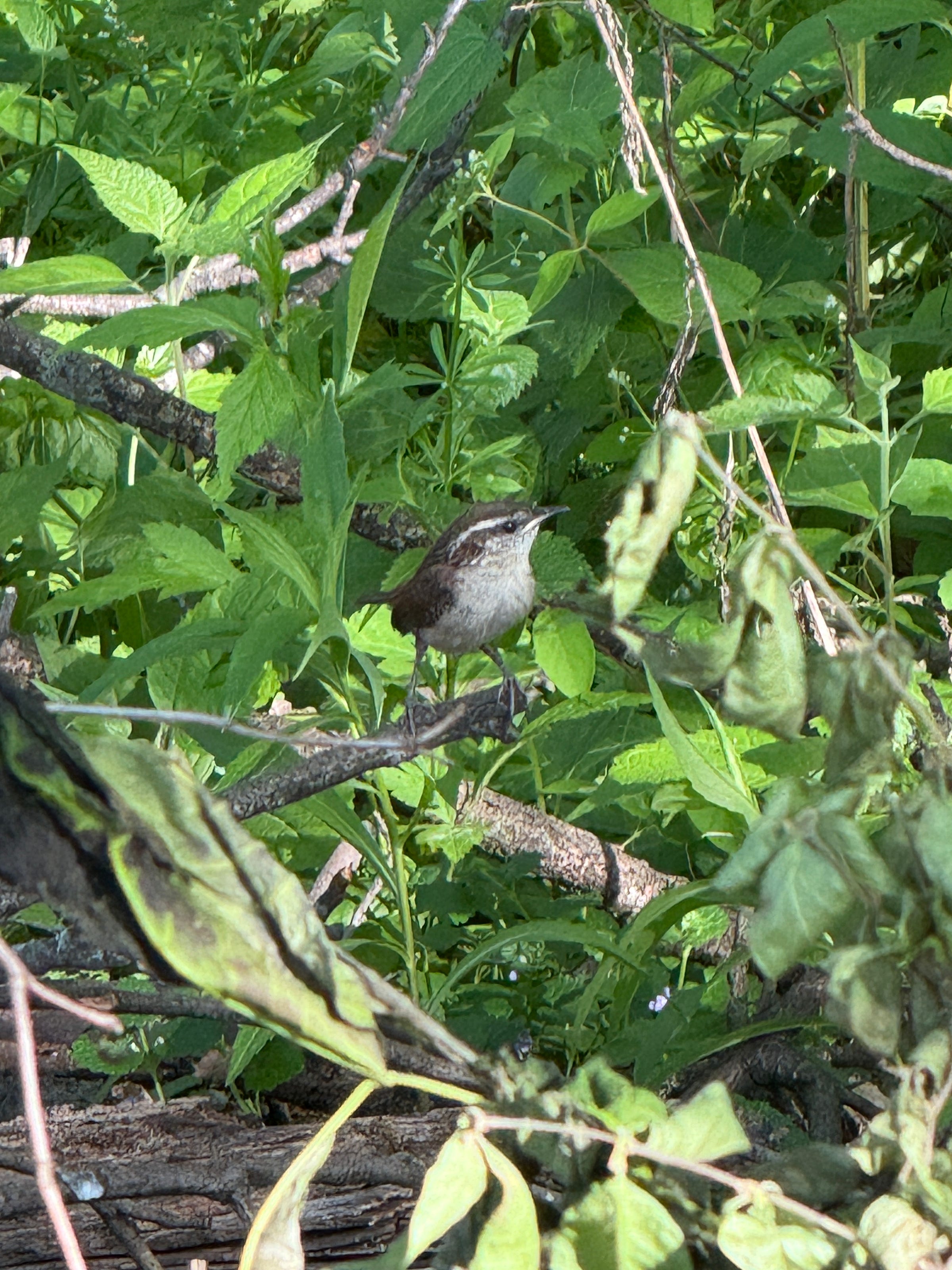In spite of the careening of the train nearly off the tracks this past week, I have managed to take enough sanity walks to accumulate my beginning bird list for Boone County, Missouri. Location: the wooded trails adjacent to Lenoir Woods community.
The majority of these are sound recognition-identification by Merlin app in iPhone. The overstory filled in quickly so seeing the bird making the sound gets almost impossible.
I am willing to let my phone’s “ears” supplement high-frequency hearing (chainsaw induced) in my right ear.
Have you seen any old friends overhead, or heard them; or experienced sounds that did not fit anything you’d ever heard before?
I did get a fair photo today of a bird not known to me before: Bewick’s Wren. See photo below. I will take the binocs and confirm.
Northern cardinal
American robin
American Crow
black capped chickadee
western tanager
summer Tanager
Carolina wren
Baltimore Oriole
eastern wood peewee
white throated sparrow
song sparrow
house sparrow
chipping sparrow
house finch
northern house wren
Northern Mockingbird
Swainsons thrush
eastern Phoebe
red-bellied woodpecker
red-headed woodpecker
hairy woodpecker
Nuthatch
boat-tailed grackle
yellow warbler
northern parula warbler
Nashville warbler
Baltimore oriole
American Goldfinch
Brown headed cowBird
European starling
Rose breasted Grosbeak
Killdeer
bluejay
Barred owl
? Bewick's wren (I.D. pending a better look at the tail for banding)
Fledglings and parents dared wren-like in and out of the wingstem, bedstraw and mint. The four or five young still barely had tail feathers but could get around just fine. The one pictured is an adult.
I was curious about the range of this new bird I’d never seen in Virginia.
6 Wren Species in Missouri! (ID Guide) - Bird Watching HQ
The Bewick's Wren (Thryomanes bewickii) in the United States has a distinct geographical range that is primarily concentrated in the western and southwestern parts of the country.
Central US: Their range extends northward into parts of the central United States, including areas of Kansas, Missouri, and potentially southeastern Nebraska and southern Iowa, though their presence here is often more localized and can fluctuate.
Eastern US: Historically, the Bewick's Wren had a more extensive range in the eastern United States, reaching the Appalachian region and parts of the Midwest and Gulf Coast. However, they have experienced a dramatic and well-documented severe decline and are now extremely rare or extirpated east of the Mississippi River. Small, localized populations might still exist in some eastern states like Maryland, Virginia, and West Virginia, but sightings are uncommon.
In summary, while their historic range was broader, the current stronghold of the Bewick's Wren in the US is west of the Mississippi River, particularly along the Pacific Coast and throughout the Southwest. They are largely a year-round resident in their western range, with some limited migratory movements at the northern edges of their distribution or to higher elevations.
These were perky and curious wee birds. It cheered me up to meet them today.






that is certainly a perky little bird
Great photo!!
(You counted bluejay twice in your list.)
I visited the Washington DC area a week ago and used Merlin to ID what I was hearing. It listed about 10 species. You really got a lot!! So glad you take your sanity walks in the woods.